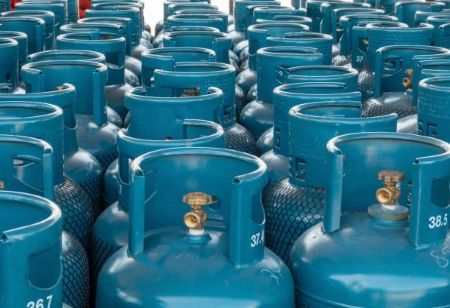
In 2011, the number of households using Liquefied Petroleum Gas in India was just 33%, but in 2021, that number soared to 71%, according to data from the India Residential Energy Consumption Survey. This has changed how the majority of Indians cook. Among numerous fuels embroiled in controversy for the environmental damages they cause, LPG has emerged as a beacon of clean energy, revolutionizing the energy industry. Once delegated to niche applications, it is now on top of the list of energy sources that can potentially take us out of the carbon crisis.
LPG serves as a catalyst for expanding energy access and affordability, particularly in developing regions with limited access to traditional energy sources. Its portable and versatile nature enables cost-effective energy solutions for off-grid communities and remote areas where grid infrastructure is impractical or economically unfeasible.
"Fossil fuels have been the backbone of the global energy system for over a century, powering everything from cars to homes to industries. However, their impact on the environment and public health has become increasingly apparent, leading many countries to set ambitious targets for reducing their use," Devin Narang, Managing Director, Sindicatum Renewable Energy.
Liquefied Petroleum Gas(LPG) plays a pivotal role in facilitating the transition to a more sustainable and low-carbon energy future. As countries strive to reduce greenhouse gas emissions and combat climate change, LPG serves as a bridging fuel that complements renewable energy sources. Its relatively low carbon intensity and clean-burning properties make it an attractive alternative to conventional fossil fuels such as coal and diesel. In addition, LPG-powered appliances and vehicles offer immediate emissions reductions and air quality improvements, supporting local and global efforts to achieve climate goals.
The decentralized distribution model of LPG enhances energy resilience and security by diversifying energy supply chains and reducing dependence on centralized infrastructure. In regions prone to natural disasters, geopolitical instability, or energy supply disruptions, LPG provides a reliable and adaptable energy solution. Its flexibility allows for rapid deployment and recovery, making it an essential component of disaster preparedness and response strategies. Furthermore, the modular and scalable nature of LPG infrastructure enables incremental expansion and upgrades, ensuring resilience against evolving threats and uncertainties.
"Many markets are still heavily dependent on traditional and centralized energy systems. Amidst the global energy crunch and impact of climate change, governments across the region are putting sustainable development goals high on their agenda," Jimmy Yam, Vice President, Eaton Electrical, East Asia.
The widespread adoption of LPG stimulates economic growth and development by catalyzing investment, creating employment opportunities, and fostering local industries. As a versatile energy carrier, LPG supports a wide range of economic activities, from agriculture and manufacturing to hospitality and transportation. Its affordability and availability enable businesses to operate more efficiently and competitively, driving productivity gains and income generation. Moreover, the development of LPG value chains, including production, distribution, and retailing, creates a ripple effect of economic benefits, empowering communities and contributing to poverty alleviation.
"Robust regulations can provide a framework for developers and stakeholders to follow sustainable guidelines and mitigate environmental impact effectively," Vikramjiet Roy, Managing Director, Maccaferri India and Regional Head – India SouthEast Asia Pacific Region.
The growing demand for LPG fuels a wave of infrastructure investment and innovation across the energy sector. From storage terminals and transportation fleets to distribution networks and retail outlets, significant investments are being made to expand LPG infrastructure and enhance supply chain efficiency. Furthermore, technological advancements in LPG equipment and appliances, such as high-efficiency burners, vaporizers, and regulators, improve performance, safety, and user experience. Innovative solutions, such as smart metering, digital payment systems, and remote monitoring, optimize resource utilization and enhance customer convenience. These investments and innovations drive the evolution of the LPG industry, positioning it as a dynamic and resilient pillar of the global energy landscape.
"Knowing what to invest in and ensuring that new methodologies are launched accurately and quickly comes down to three things – what you have, what you know, and who you know," Zoya Brar, Founder, CORE Diagnostics.
We use cookies to ensure you get the best experience on our website. Read more...